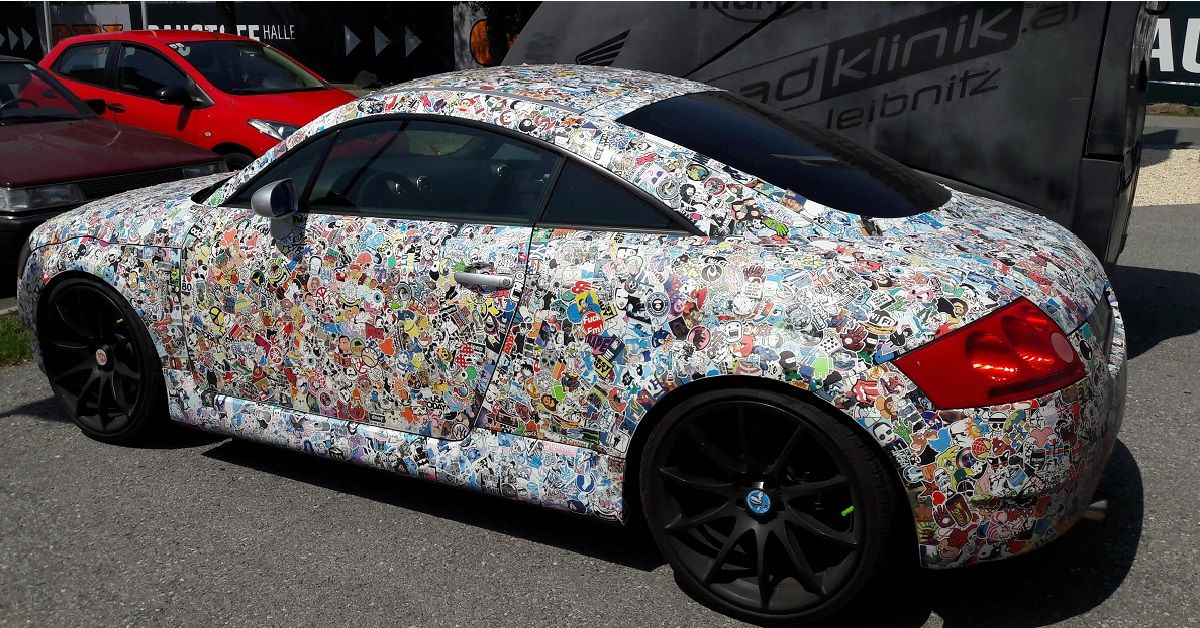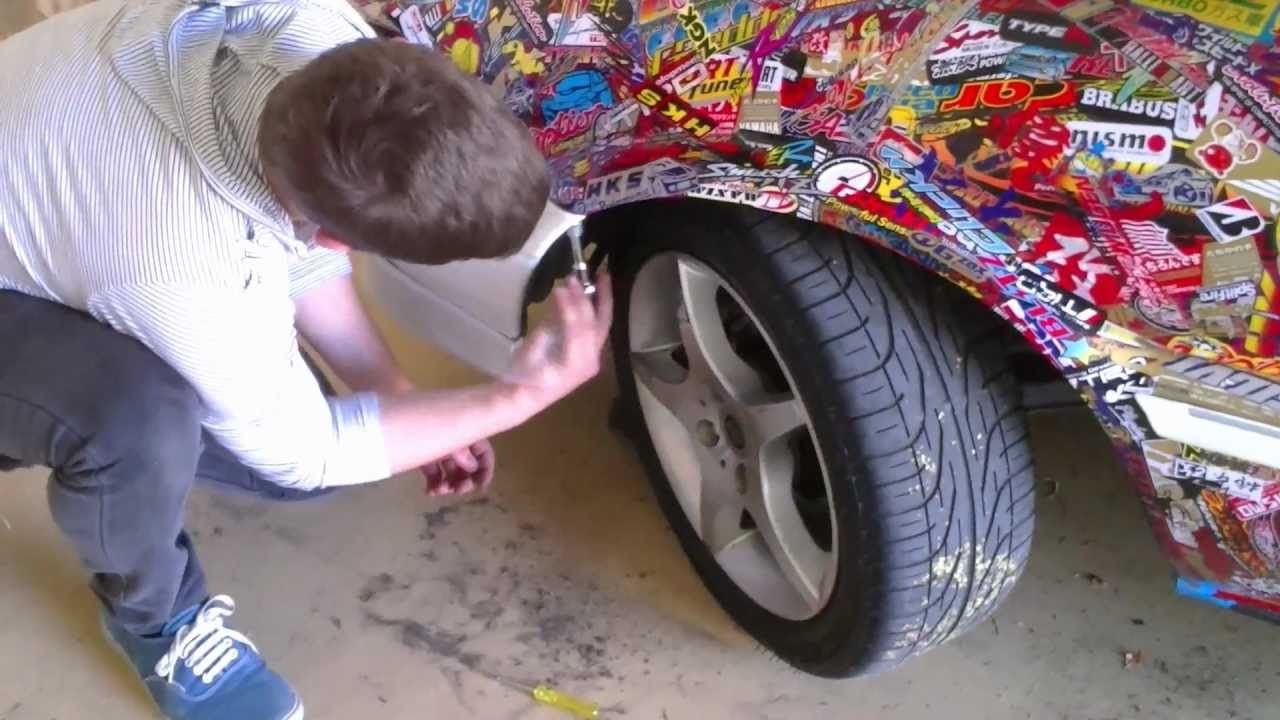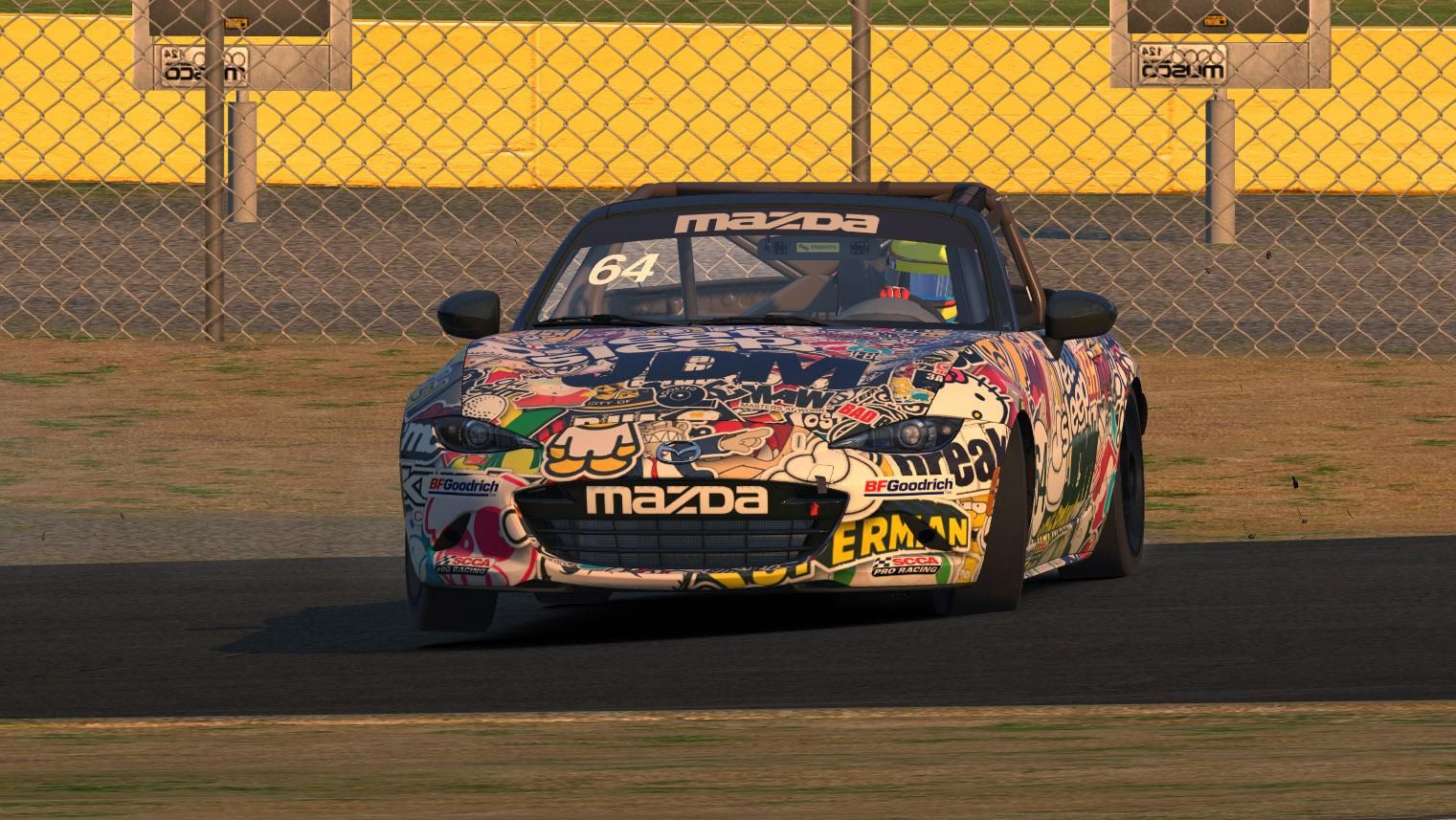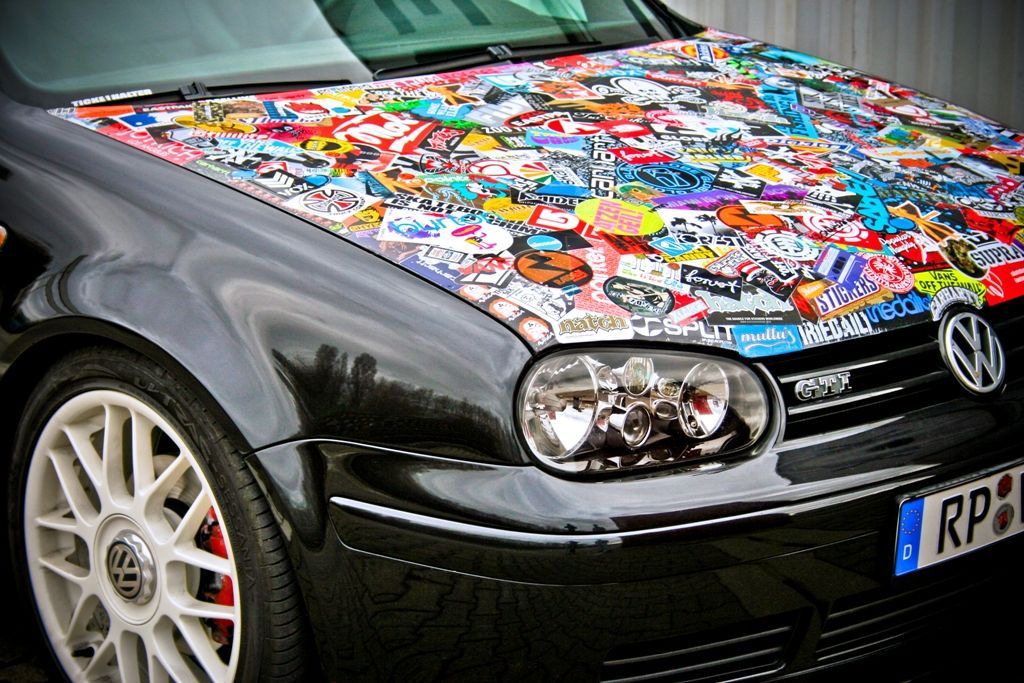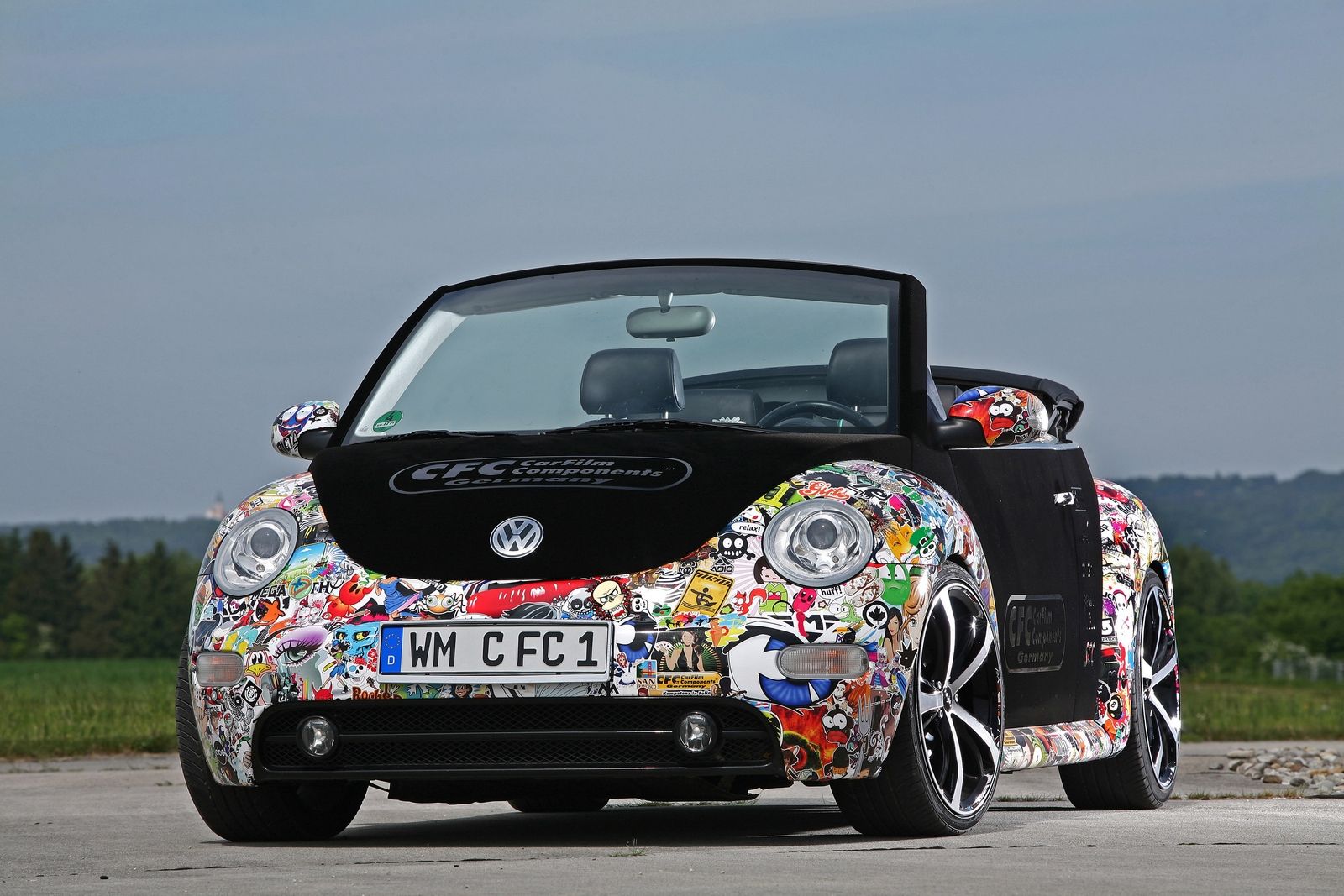Sticker bombing a car, to simplify, is when a car is covered mainly in stickers, where most of the original surface is no longer visible. This trend began as a form of street art, though, as it is defined as an extension of vandalism, is considered defacing property and is therefore illegal. Stickers can be difficult to remove, damaging car paint or other surfaces on the car.
People can also find it to be cheap, tacky, distasteful, and distracting. Read on to find out more about the definitions and cons of sticker bombing a car.
Qualifies As Vandalism, Which Is Illegal
Technically, sticker bombing is considered a type of vandalism. Vandalism is considered illegal, which, by extension, would make sticker bombing illegal as well. In the United Kingdom, sticker bombing cars is explicitly illegal, following complaints about how the look of the cars was both 'off-putting' and confusing to other drivers on the road.
It was confusing in that it was enough of an oddity that it would attract attention away from focusing on the road, and the lack of a uniform color would decrease visibility, especially at night. However, the term the UK uses on their website is 'decal plastering.'
Regardless, it's explicitly illegal there, whereas, in the United States, it's only illegal by extension of vandalism. “Vandalism” is defined as “deliberately mischievous or malicious destruction or damage of property,” or “willful or ignorant destruction of artistic or literary treasures,” according to dictionary.com.
Vandalism may involve permanent damage, but it's not serious enough that property is destroyed, malfunctioning, or non-operational. Placing these items on another person's property is likely to constitute physical damage, so putting stickers on any public property has been made illegal.
One saving grace is that if the stickers are easy to remove, then the offense is downgraded from “vandalizing” to “littering.” But the vandalism charges remain should the surface be noticeably damaged upon sticker removal. Further, the stickers can be difficult to remove once placed, especially considering the removal of stickers may damage the paint.
A combination of a non-solvent-based cleaner and a tough plastic scraper is recommended, and fly spray has also been known to produce positive results. Another method is using a heat gun before the solvent. Acetone is effective, although not recommended, as it produces unpleasant fumes.
Street Art Defined
There are many different kinds of “street art” out there, sticker bombing among them, all with varying degrees of legality.
Street art is usually created and displayed in public areas or venues with no license or sanction, and it's usually not conforming to guidelines of “traditional” art, some of which include wheat-pasted poster art, sticker art, spray paint graffiti, stencil graffiti, and street installations and statues.
Then, to subcategorize it, there's graffiti, which is defined as scribbled writings or drawings within public view using paint or another colorful medium. Then, there's sticker bombing, which is the displaying of a public message or image via stickers and covering objects in said stickers.
Further related terminology defines “buffing” as replacing someone else's sticker with a new one, either by removing the old sticker before applying the new one, or just putting the new sticker on top of the old one. “Riding” is another related term, applying to when a sticker is starting to peel off but has not yet fully peeled away.
Not That Tasteful
Many people have been known to object to sticker bombing because they find it cheap, crude, crass, tacky, or trashy. This is regardless of what type, style, or kind of stickers is used. People also complain that the stickers are too “in-your-face,” as opposed to off to the side or subtly subdued.
Personalization is the appeal here, and users often get carrying away by adding too many stickers to a given surface. It also becomes easier to advertise an interest, cause, or hobby with those stickers. That said, people tend to forget how hard stickers are to remove, as they are essentially analogous to tattoos for cars. When stickers are removed, residue may remain, and it's an unsightly appearance.
Keep The Windshield Clear
By law, the windshield is only allowed to have verified, certified stickers on it, and even that, those stickers have to conform to certain positions and sizes. Due to its front and center position, the windshield is more strictly regulated than the rest of the car.
The windshield is specifically reserved for certificates, government agency stickers, or order stickers. Even then, the limit for coverage is 15 square inches of the windshield and the stickers themselves are required to be placed in the corner.
The lower left-hand corner of the windshield is where these permitted stickers are likely to be placed, although some auto repair shops and mechanics place certification stickers on the upper, driver-side corner of the windshield.
Sources: everythingwhat.com, forums.mightycarmods.com, postandcourier.com, saxperience.com, dictionary.com, thedailystar.net, nzhondas.com,

